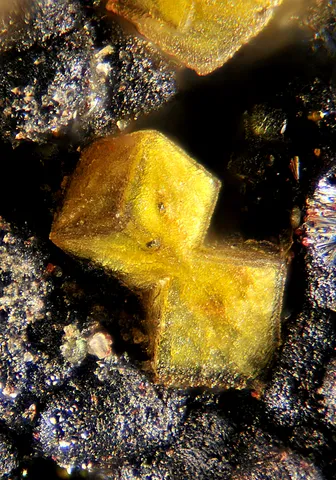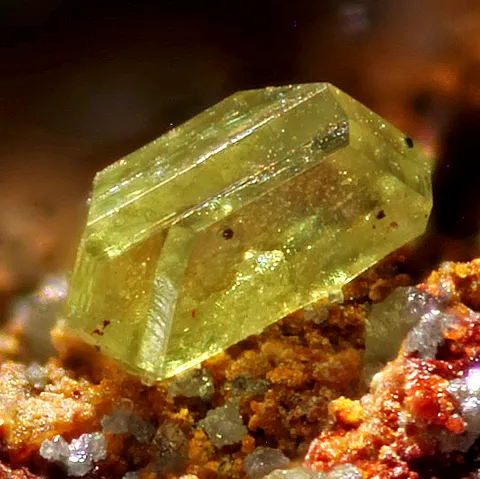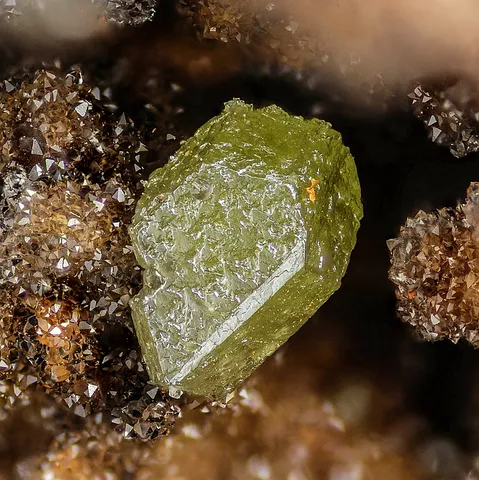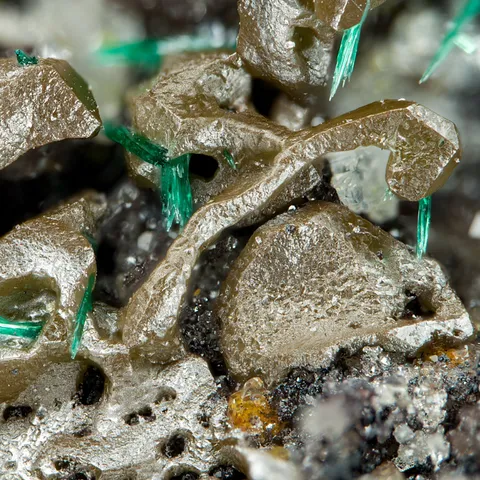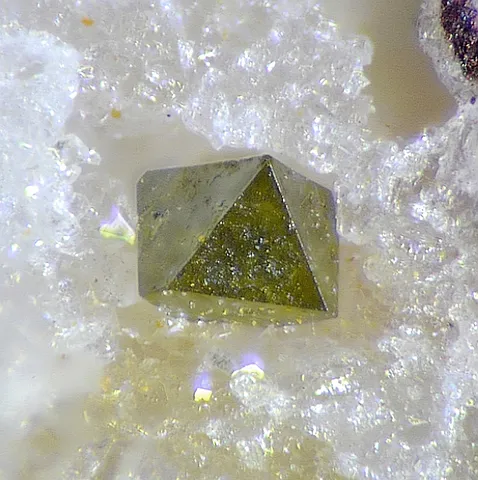BROMARGYRITE
Class : Halides
Subclass : Bromides
Crystal system : Cubic
Chemistry : AgBr
Rarity : Uncommon
Bromargyrite is a silver halide that forms a solid solution with chlorargyrite. These two minerals occur in the superficial oxidation zone of silver and argentiferous galena deposits. Its name is derived from its chemistry : bromine + silver (argyros in Greek). It is a pale yellow to orange-yellow, occasionally greenish, translucent, high luster, low hardness (2.5) mineral. The crystals are cubes, frequently modified, sometimes twinned on {111}, often grouped in parallel aggregates. Bromargyrite is associated with other silver halides and various secondary minerals of iron (goethite), lead (cerussite), silver or zinc, depending on the metals present in the deposit ; native silver is also common. It was occasionally a silver ore.
Main photo : Bromargyrite from Schöne Aussicht Mine, Dernbach, Germany © Dario Cericola
Bromargyrite in the World
Twinning
Twins are known on {111} for this mineral species.
Fakes and treatments
No fake identified for this mineral species.
Hardness : 2.5
Density : 6.47
Fracture : Irregular
Trace : White to yellow
TP : Translucent to transparent
RI : 2.253
Birefringence : 0
Optical character : None
Pleochroism : None
Fluorescence : None
Solubility : Ammonia and potassium cyanide
Magnetism : None
Radioactivity : None

